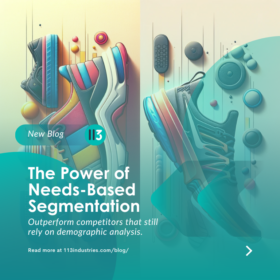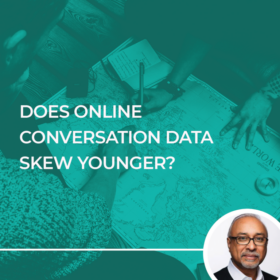In early 2014, Taco Bell introduced a new item to their breakfast menu, the Waffle Taco. The product was described as “a warm waffle wrapped around a hearty sausage patty or flavorful bacon, with fluffy scrambled eggs and cheese, and served with a side of sweet syrup.” Taco Bell hoped the wacky new item would boost breakfast sales by leveraging the company’s “Live Más” mantra while simultaneously appeasing consumers’ “on-the-go” lifestyle.
Unfortunately for Taco Bell, the Waffle Taco was not the revelation the company had hoped for. Within one year, the item was pulled from the menu. In 2022, Taco Bell hired SNL alum Pete Davidson to playfully apologize for Taco Bell’s “maybe-too-extreme” breakfast creation.
It is not uncommon for new products to fail, especially in a modern environment of fast-changing consumer behaviors. But it is important to recognize missteps to improve product offerings and cater to consumer needs, especially in ultra-competitive spaces.
Through their own admission, Taco Bell recognized they misidentified the true consumer needs regarding breakfast. While innovative and sometimes crazy new product ideas can succeed at other mealtimes, Taco Bell realized that consumers preferred “ease and familiarity” when it comes to their breakfast choices. By pivoting away from “extreme” items and focusing on familiar breakfast foods, Taco Bell is more aligned with true consumer needs.
As exemplified by Taco Bell’s Waffle Taco experience, it is crucial for companies to gain a deep understanding of consumer needs. Conventional market research methods frequently fail to capture the nuanced insights required for successful product launches. This is where the Jobs-to-be-Done (JTBD) framework comes into play, along with 113 Industries’ innovative approach to implementing its components through customiz AI modeling.
The Jobs-to-be-Done Framework:
Despite the fact that consumer data is more abundant and accessible than ever before, companies still struggle to translate that data into successful innovation. It is often assumed that knowing more about consumers leads to more successful product launches; however, information overload can lead companies down the wrong path. While traditional methods focus on correlations in consumer data, the Jobs-to-Be-Done framework allows companies to find the answer to the most important consumer question: what job are they trying to get done?
Developed by Harvard Business School professor Clayton Christensen, the Jobs-to-be-Done methodology asserts that customers “hire” products or services to fulfill specific jobs in their lives. At its core, this framework is a lens through which companies can evaluate consumer needs. It goes beyond the surface-level understanding of demographics and psychographics, delving into the functional, emotional, and social dimensions of consumers’ lives. Instead of overvaluing consumer demographics like age or education level, the Jobs-to-be-Done framework enables companies to identify real solutions for consumers.
Let’s explore additional examples of the Jobs-to-be-Done framework in action:
Jobs-to-be-Done Example 1 – Netflix:
Netflix revolutionized the way people consume entertainment by understanding that customers didn’t just want to rent DVDs; they were hiring entertainment to relax and unwind after a long day or to enjoy quality time with family and friends.
As Co-Founder and Chairman Reed Hastings famously remarked, “We compete with everything you do to relax.” Netflix’s streaming service tackled this task head-on by offering an expansive library of movies and TV shows, conveniently accessible on-demand. This approach provided users with the flexibility to enjoy entertainment on their own terms, setting a new standard in how entertainment is consumed.
Jobs-to-be-Done Example 2 – Apple:
Before Apple released the iPod, it was common to lug around bulky Walkmans to enjoy music on the move, limited to the inconvenience of a single CD at a time. So when Apple introduced the iPod, it wasn’t just about creating a new MP3 player. They understood that customers were hiring MP3 players to solve the job of seamlessly carrying and accessing their entire music collection.
Apple’s iconic slogan, “1,000 songs in your pocket,” directly addressed this job-to-be-done. The iPod’s integration with iTunes and its sleek, compact design were precisely tailored to meet these demands, propelling Apple to remarkable revenue growth and solidifying its position as an industry leader in portable music devices.
Conclusion: The Jobs-to-be-Done framework is a powerful tool that reaches beyond traditional market research, providing a deeper understanding of consumer needs. 113 Industries combines this approach with proprietary AI software to uncover the functional, emotional, and social dimensions of consumer behavior, ultimately guiding businesses toward innovation that actually resonates with their target audience.
By identifying the specific jobs customers need to do, companies can tailor their products and services to align with consumers’ unmet and often unarticulated needs. In a world where consumer preferences are constantly evolving, the Jobs-to-be-Done framework serves as a compass, directing businesses toward solutions that not only meet immediate needs but also create long-term customer loyalty.
The Jobs-to-be-Done framework empowers the world’s most successful companies to move beyond the surface level and dive deep into the intricate web of consumer preferences, transforming insights into revenue driving innovations.
With 113 Industries at your side you too can embrace the Jobs-to-be-Done framework. Contact us today to get started.





